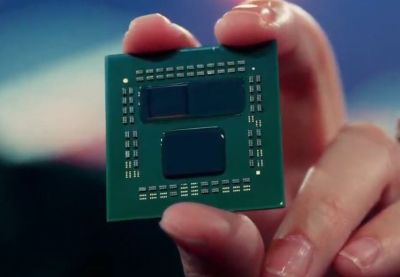If you have a deep-felt appreciation for vinyl, then why not share it with the rest of the world? That was just the sentiment of the many filmmakers and collectors who made the documentaries about the coveted record that are listed below.
From a look into the private record collection of one of Britain’s legendary radio DJs to everything you could want to know (and more) about the turntablism movement, these docs all capture, in one way or another, the essence of the culture of record spinning, record collecting and record shops.
Many are available to watch on YouTube for free, while others are available to rent digitally at home for a small fee or to purchase on DVD.
So have at them, vinyl junkies.
- 13 of the best Record Store Day releases for 2021
Vinyl (2000)
For the fans by a fan, Vinyl sees Toronto filmmaker and avid record collector Alan Zweig explore, not vinyl albums themselves, but rather what inspires people to start collecting them in the first place – and the emotional attachment, and in some cases obsession and excessiveness, the hobby can provoke. His own and others’ confessions really open a window into the psyche behind record collecting.
Scratch (2001)
Before going on to write and produce the HBO docuseries The Defiant Ones (which chronicles the legendary careers of Dr. Dre and Jimmy Iovine), American filmmaker Doug Pray made a feature-length documentary on the story of the hip-hop DJ, from the invention of scratching and “beat-juggling” vinyl in the ’70s to the more recent ‘turntablism’ movement. In Scratch, we hear from both underdogs and virtuosos who have changed the way we create and hear music.
- Watch Scratch on YouTube
- Find Scratch DVD on Amazon
John Peel’s Record Box (2005)
Exactly what it says on the tin, this hour-long documentary looks at the private record collection of the legendary BBC Radio 1 presenter. Filmed the year after Peel passed away, it digs into the ‘special box’ in which he stored 143 of his favourites. The film features interviews with John’s wife Sheila Ravenscroft as well as radio DJs and artists such as Mary Anne Hobbs, Sir Elton John, Ronnie Wood, Roger Daltrey and Michael Palin.
- Watch John Peel’s Record Box on YouTube
I Need That Record! The Death (Or Possible Survival) Of The Independent Record Store (2008)
The culmination of a project that began as American student Brendan Toller’s undergraduate thesis, this bittersweet, but no less interesting for it, documentary investigates some of the reasons 3000 indie record stores closed across the US over the decade previous to its release.
- Rent I Need That Record! on YouTube or Google Play Store
Sound It Out (2011)
A feel-good portrait of the last surviving independent record shop in Teesside, north-east England, Sound It Out Records, three miles from where director Jeanie Finlay lives. Sound It Out features the very knowledgeable shop owner, Tom Butchart, and documents what the shop means to its long-standing customers, including how it helped shape Finlay’s love of music and life-long vinyl obsession.
- Rent Sound It Out on Vimeo, YouTube or Google Play Store
- Find Sound It Out DVD on Dogwoof
Vinylmania: When Life Runs at 33 Revolutions Per Minute (2012)
A sincere love letter to the “object that has never lost its soul”, this doc explores the history, cultural impact and comeback of – and the fascination with – the vinyl record. Includes commentary from Philippe Cohen Solal (Gotan Project), Winston Smith (Dead Kennedys, Green Day record sleeve artist), Peter Saville (Factory, Joy Division, New Order record sleeve artist) and DJ Kentaro (2002 DMC World DJ Champion).
Last Shop Standing: The Rise, Fall And Rebirth Of The Independent Record Shop (2012)
Based on the 2009 book Last Shop Standing by record distributor Graham Jones (which we’re now promptly adding to our reading list), this British, crowd-funded documentary – and the official film of Record Store Day 2013 – is a pertinent (and often nostalgic) examination of the record shop’s sheer importance in Britain’s musical and cultural history. An homage to the independent, all the more touching with the hindsight of today’s vinyl revival, it casts record store owners and their loyal customers, music fans and journalists, and even Johnny Marr, Billy Bragg and Paul Weller.
- Rent Last Shop Standing on Vimeo
- Find Last Shop Standing DVD on Amazon
The Vinyl Revival (2019)
It’s a testament to the reversal of vinyl’s fortunes that, seven years on from Last Shop Standing, Pip Piper followed up with The Vinyl Revival, a 43-minute exploration of the record renaissance. In addition to long-established record shops owners, he visits those that are newer on the scene and explores the growing passion for vinyl among those born in the digital era. The film discusses how record collecting lost its image as a hobby for middle-aged men, becoming instead a pursuit of fashion-conscious consumers, and asks the question: if the upward trend is sustainable, for how long will vinyl remain fashionable ? It includes interviews from Nick Mason (Pink Floyd), Philip Selway (Radiohead), Adrian Utley (Portishead), Joel Gion (The Brian Jonestown Massacre), The Orielles and CASSIA.
Rent The Vinyl Revival on Vimeo
Our Vinyl Weighs a Ton: This Is Stones Throw Records (2013)
A Hollywood record shop gets the Hollywood treatment with this celebrity-studded documentary that celebrates almost two decades of avant-garde Los Angeles-based record label Stones Throw Records. The store was founded in the mid-’90s by DJ/producer Peanut Butter Wolf (a self-confessed “awkward white kid from San Jose”). Featuring in-depth interviews with the artists who put the label on the map, as well as testimonials from the likes of Kanye West, Snoop Dogg and Common, Our Vinyl Weighs a Ton is an energetic, underdog-story depiction of the left-of-centre hip-hop label.
- Find Our Vinyl Weighs a Ton on iTunes
- Rent Our Vinyl Weighs a Ton on YouTube or Google Play Store
In Wax We Trust (2016)
While touring his 2016 By Any Beats Necessary album in the US, French DJ Wax Tailor (Jean-Christophe Le Saoût) interviewed owners of small record stores across the country, asking them what drives them, day in and day out, to sell records in an increasingly digital, dematerialised world. The upshot is a 30-minute documentary, released to coincide with the album launch, that provides a soapbox to members of the record community that so persistently exist at its very heart.
- Watch In Wax We Trust on YouTube
Desperate Man Blues: Discovering the Roots of American Music (2008)
Chronicling the life of eccentric record collector Joe Bussard (founder of Fonotone Records), Desperate Man Blues tells the story of America’s ‘real music’. At 84, Bussard has devoted his life to preserving the music of the American South, including blues, hillbilly, bluegrass, gospel and jazz, during which time he has amassed more than 25,000 records. The film includes treasure hunts, hilarious stories and quotes like: “There are no good jazz records made after 1927.” And it has a fantastic roots-heavy soundtrack featuring Charley Patton, Son House, The Carter Family, Uncle Dave Macon and Blind Willie McTell.
Find Desperate man Blues on Amazon
MORE:
Where to buy vinyl: affordable ways to start a record collection
12 of the best vinyl test records
25 record stores to visit before you die
18 songs that sound their best on vinyl














